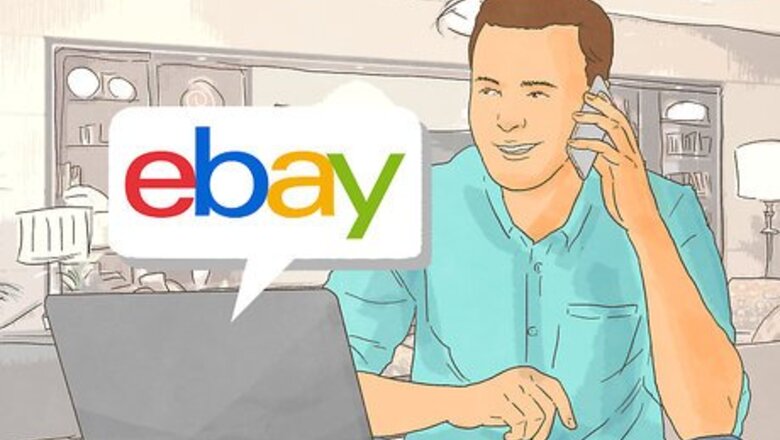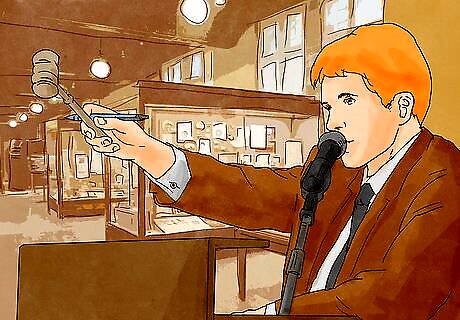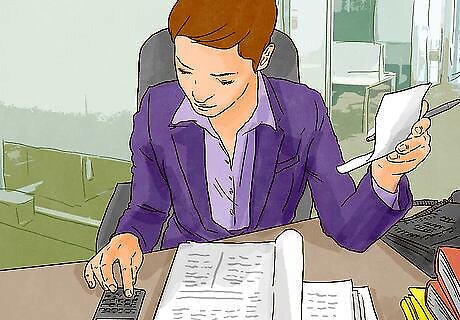
views
Searching Online

Use eBay to price your item. The website eBay has a feature that allows users to research the price of items based on the typical selling price of the item, or items that are similar. Go to the seller center, log into your user account, use the text field to search for your item, and click “look up”. For instance, if you were to enter a search for “Spiderman suit,” the results would show an average price of $20.61, with Spiderman suits ranging in price from $0.01 to $199. If you want to look at the different asking prices (and not what the item sells for), you can do a general search for the item and sort it by price. For example, if you type in “New iPhone 6,” the lowest asking price is $380 while the highest asking price is $699.

Use a search engine. If your item is a more general item and not a rare collectible or antique, try using a search engine like Google. When you type in the item, it will often list similar items for sale, including new and used options. You can also use the "shopping" function to quickly compare items and prices. For example, if you search “Men’s Nike Shox” the results page shows both pictures and prices, with costs ranging from $80 to $125.

Visit an online database. Look for online databases that offer pricing information for your item. Use your preferred search engine, type in your item, and then include the word database. For instance, if you search “antiques database” there are many results that list prices of collectibles. Kovels is an online database that offers a free subscription to its pricing guide.

Search an online valuation site. There are many sites online where professional appraisers or subject matter experts offer estimates on your items. Simply upload a photo and add descriptions. The site will typically respond within a week with a valuation of the item. Charges for this service vary, but price starts at a minimum of $10 to $30. Some sites have monthly memberships which give the user access to a database of sales records, and instant price searches. Try sites such as What’s It Worth to You, Value My Stuff, and Worth Point. If you’re searching for the tax-deductible value of items that have been donated, you can use valuation sites, tax preparation companies (such as Turbo Tax) or the Salvation Army.
Getting a Professional Opinion

Visit a certified appraiser. There are professional appraisers for almost every item. When seeking an appraiser, choose a professional who is certified by the American Society of Appraisers, the Appraisers Association of America, or the International Society of Appraisers. Once the appraisal is complete, you will receive a written report discussing the item, the procedure used to value it, and the current value of the item. Costs vary greatly depending on the appraiser and the item. Some appraisers charge by the hour (anywhere from $200 to $400 based on their expertise), while some charge a flat rate. Avoid working with an appraiser who charges a percentage of the item’s value. In order to ensure a fair valuation, take the item to an appraiser before taking it to a local antique store or dealer. Unlike individual dealers, the appraiser will have no conflict of interest, since they are ethically bound from making an offer for purchase after appraising an item. Bank managers or estate attorneys are often good sources to help find reputable appraisers.

Take the item to an antique store. Many antique stores also employ professional appraisers. Contact your local antique store to discuss appraisal options. Appraisers should still be certified by a national appraisal board. They often offer insurance replacement valuations or fair-market valuations, but they also offer less-expensive services such as verbal-approximations. Prices for services vary based on location.

Contact a collectibles dealer. If your item is a collectible which has well-established price guidelines (such as baseball cards), search online for a collectible dealer to assist in pricing your item. Search for someone who is certified by a national appraisal board for the fairest valuation judgments. Make sure that the collectibles dealer is reputable. Read reviews about them online, if possible.

Visit auction houses. Auction houses offer private valuation services for various fees (based on location). Occasionally, auction houses will offer a “valuation day” or “appraisal day” where they will offer free valuations for the general public. Contact your local auction house such as Sotheby’s or Christie’s for information on scheduled dates and procedures. PBS’s The Antique Roadshow is one such auction house which tours the USA and offers tickets and applications to have items appraised. Their website also offers online appraisals.
Using Library Resources

Utilize a price guide. There are many well-established guide books for various collectible items. Search your local library for price guides to determine the value of your item. For example, Kovels’ Antiques & Collectibles Price Guide is a collection of recent prices paid for items in at least 700 categories at auctions, shops, shows, flea markets, and online. Other titles include: A Guide Book of United States Coins Scott Standard Postage Stamp Catalogue The Standard Catalog of Baseball Cards Beckett Almanac of Baseball Cards & Collectibles

Search collector’s books. Collector’s books can provide detailed information on items such as size, condition, manufacturer’s marks, etc. These reference books may also contain pricing information based on similar items. Check your local library or book store for collector’s books specific to your needs. Used bookstores are another great resource. You may also find digital books online.

Ask your librarian for help. A librarian is often a good source of general information, and can also be very helpful in leading you to the right books or reference materials online.



















Comments
0 comment